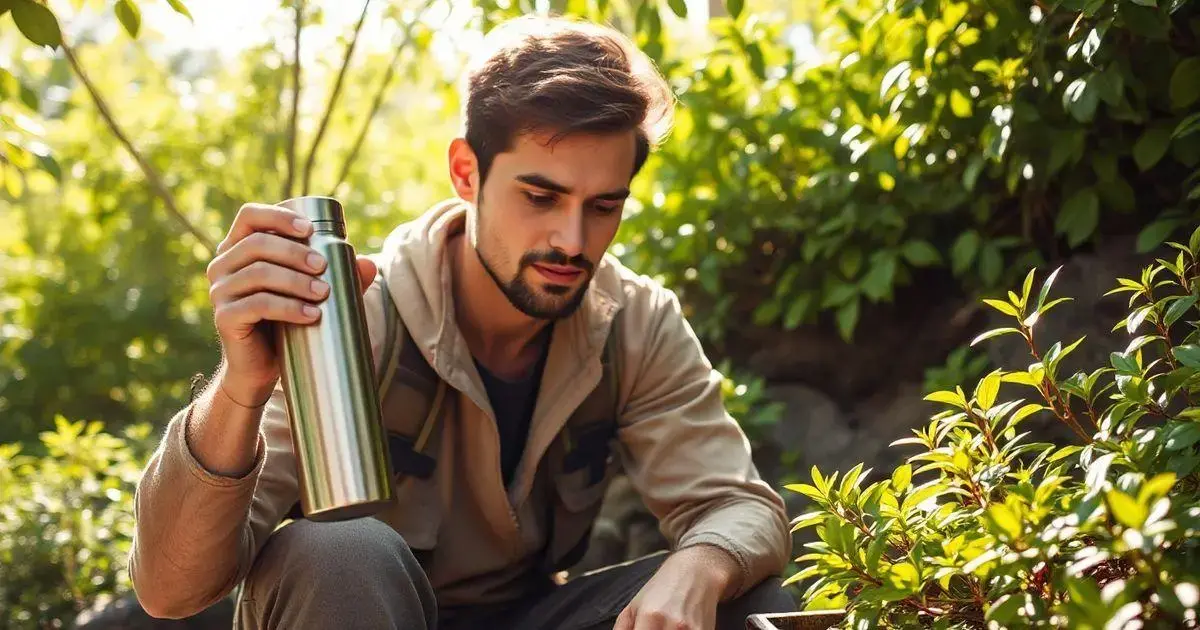Are Plastic Water Bottles Eco-Friendly?
Plastic water bottles are a ubiquitous part of our modern lives, but are they really as harmless as they seem? With concerns about their impact on the environment growing, it’s crucial to delve into the eco-friendliness of these everyday items. Let’s explore the facts and myths surrounding plastic water bottles to determine their true environmental impact.

The Environmental Impact of Plastic Water Bottles
Plastic water bottles have a significant environmental impact, contributing to pollution, waste, and harm to ecosystems worldwide. Understanding the consequences of using plastic water bottles is crucial to making informed choices for a sustainable future. Here, we delve into the environmental impact of plastic water bottles and explore ways to minimize their detrimental effects.
Step 1: Plastic Pollution
Plastic water bottles are one of the leading contributors to plastic pollution in oceans, rivers, and landfills. These bottles take hundreds of years to decompose, releasing harmful chemicals into the environment during the process. To combat plastic pollution, opt for reusable water bottles made from sustainable materials like stainless steel or glass.
Step 2: Waste Management Challenges
The disposal of plastic water bottles poses significant challenges for waste management systems globally. Improperly discarded bottles end up in landfills, where they leach toxins into the soil and groundwater. To address waste management challenges, explore recycling programs in your area and support initiatives that promote plastic bottle recycling.
Step 3: Impact on Wildlife
Plastic water bottles endanger wildlife, with many marine animals mistaking them for food or becoming entangled in their plastic rings. This can lead to injury, suffocation, and death among various species. Contribute to wildlife conservation efforts by reducing your consumption of single-use plastic bottles and raising awareness about the impact on wildlife.
Common Myths Debunked About Plastic Water Bottles
There are several misconceptions surrounding plastic water bottles that need to be debunked to promote accurate information and encourage sustainable choices. By addressing these myths, individuals can make more informed decisions regarding their water consumption habits. Let’s unravel some common myths about plastic water bottles and set the record straight.
Myth 1: Plastic Bottles are Recyclable
While plastic bottles can theoretically be recycled, the reality is that a significant percentage of them end up in landfills or incinerators instead of being recycled. To combat this issue, prioritize reusing and recycling plastic bottles whenever possible to reduce environmental impact.
Myth 2: Bottled Water is Safer than Tap Water
Contrary to popular belief, bottled water is not necessarily safer or cleaner than tap water. Municipal tap water is subject to stringent regulations and quality control measures, making it a safe and sustainable choice for hydration. Invest in a high-quality water filter to enjoy clean and safe drinking water at home.
Myth 3: Biodegradable Bottles are the Solution
While biodegradable bottles may seem like an eco-friendly alternative, they often require specific conditions to decompose fully, such as industrial composting facilities. Opt for reusable water bottles made from durable and sustainable materials like stainless steel or silicone for a more environmentally friendly option.
Sustainable Alternatives to Plastic Water Bottles
Transitioning to sustainable alternatives to plastic water bottles is a proactive step towards reducing your environmental footprint and promoting a greener lifestyle. By embracing eco-friendly alternatives, you can contribute to conservation efforts and minimize plastic waste generation effectively. Here, we explore sustainable alternatives to plastic water bottles to help you make more planet-friendly choices.
Step 1: Reusable Water Bottles
Invest in high-quality reusable water bottles made from materials like stainless steel, glass, or BPA-free plastic. These durable and eco-friendly alternatives can be used repeatedly, reducing the need for single-use plastic bottles and cutting down on waste generation.
Step 2: Filtered Water Pitchers
Consider using a filtered water pitcher at home to enjoy clean and great-tasting water without the need for single-use plastic bottles. Filtered water pitchers remove impurities and contaminants from tap water, providing a sustainable and cost-effective hydration solution.
Step 3: Hydration Stations and Refillable Stations
Support hydration stations and refillable water bottle stations in your community, workplace, or public spaces. These stations offer free access to clean drinking water and encourage the use of reusable bottles, promoting sustainability and reducing plastic waste.

Benefits of Using Plastic Water Bottles
Plastic water bottles offer several advantages that make them a popular choice for staying hydrated on the go. One significant benefit is their lightweight and durable design, making them convenient to carry during various activities such as hiking, biking, or traveling. Additionally, plastic water bottles are usually affordable and easily accessible, allowing users to stay hydrated without breaking the bank. Their versatility in terms of size and shape caters to different preferences and needs, whether you prefer a small bottle for quick sips or a larger one for extended outings.
Moreover, plastic water bottles are reusable and can be refilled multiple times, promoting sustainability by reducing single-use plastic waste. Many models are also dishwasher safe, simplifying the cleaning process and ensuring proper hygiene. With proper care, plastic water bottles can last a long time, providing a cost-effective and eco-friendly hydration solution.
Factors to Consider When Choosing Plastic Water Bottles
When selecting a plastic water bottle, it’s essential to consider several factors to ensure you choose the most suitable option for your needs. The material of the bottle is crucial, as different plastics offer varying levels of durability and safety. Look for bottles made from BPA-free materials to minimize potential health risks associated with certain chemicals.
The design and features of the bottle also play a significant role in usability. Consider aspects such as leak-proof caps, wide-mouth openings for easy filling and cleaning, and ergonomic shapes for comfortable handling. Capacity is another essential factor – choose a bottle size that matches your typical hydration needs, whether you need a compact bottle for short outings or a larger one for all-day hydration.
Tips for Proper Care and Maintenance of Plastic Water Bottles
Proper care and maintenance are key to prolonging the lifespan of your plastic water bottle and ensuring hygienic use. Regularly washing your bottle with warm, soapy water and allowing it to air dry helps prevent bacteria buildup and odors. Avoid using abrasive cleaners or harsh chemicals that can damage the bottle’s material.
For thorough cleaning, consider using a bottle brush to reach all areas, especially narrow openings or crevices. Inspect the bottle regularly for signs of wear and tear, such as cracks or discoloration, and replace it if necessary to maintain safety and functionality. Storing your bottle in a cool, dry place away from direct sunlight can also help preserve its quality over time.
Conclusion
The environmental impact of plastic water bottles is profound and wide-ranging, affecting our ecosystems, wildlife, and waste management systems. Understanding the consequences of our choices is essential for promoting a sustainable future. By recognizing that plastic pollution is a pressing issue requiring urgent action, we can take steps to protect our planet.
Embracing sustainable alternatives like reusable water bottles, filtered water pitchers, and hydration stations empowers individuals to make positive changes. These options not only reduce plastic waste but also offer safe and healthy hydration solutions. It’s important to debunk common myths surrounding plastic water bottles so that people can make informed decisions that benefit both themselves and the environment.
In conclusion, by prioritizing eco-friendly practices and supporting initiatives for recycling and conservation, we can work together to diminish the harmful effects of plastic water bottles. Every small action contributes to a larger movement towards a cleaner, healthier planet. Let’s commit to making responsible choices for a sustainable lifestyle and encourage others to do the same, ensuring a better future for generations to come.
